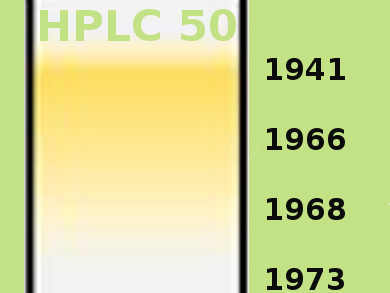Already in 1941, Archer J. P. Martin and Richard L. M. Synge published a paper predicting that high pressure and small particles will lead to efficient separations [1]. However, as often happened with breakthroughs [2], it took another 25 years before, in 1966, Csaba Horváth and Seymour (Sandy) Lipsky published the first report of HPLC. They described the ion-exchange separation of nucleotides and thyroid compounds [3].
One year later, what was considered by many as the first commercial HPLC instrument was brought to the market by Waters Association [4]. The so called ALC-100 was formally introduced at the 1968 Pittsburgh Conference on Analytical Chemistry and Applied Spectroscopy (Pittcon) in Cleveland, OH, USA.
In 1973, the first HPLC meeting was held in Interlaken, Switzerland. In 2018, the 45th HPLC will take place in Washington, DC, USA.
Individual comments on HPLC will be given by scientists throughout the rest of the year at ChemistryViews.org/hplc50 together with free research content and a wealth of knowledge around HPLC.
[1] A. H. Gordon, Archer J. P. Martin, Richard L. M. Synge, A study of the partial acid hydrolysis of some proteins, with special reference to the mode of linkage of the basic amino-acids, Biochem. J. 1941, 35 (12), 1369-1387. DOI: 10.1042/bj0351369
[2] How Breakthroughs Occur in Research, ChemViews Mag. 2012.
[3] Csaba Horváth, Seymour (Sandy) Lipsky, Fast liquid chromatography. Investigation of operating parameters and the separation of nucleotides on pellicular ion exchangers, Anal. Chem. 1967, 39 (12), 1422–1428. DOI: 10.1021/ac60256a003
[4] Leslie S Ettre, Chapters in the Evolution of Chromatography, Imperial College Press, London, UK, 2008. ISBN: 978-1-86094-943-2




